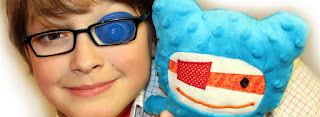Treatment of amblyopia during childhood can have both
positive and negative impacts in later life. The treatment of amblyopia could
influence Vision-related Quality of Life in adults and children, particularly
social relationships and emotions. For example, children with a history of
occlusion were 35% to 37% more likely than children without visual defects to
have suffered from verbal or physical bullying at school. Many parents
associate occlusion treatment with a decrease in children’s self-confidence
because of poor vision during occlusion and report greater distress and more
conflict at home.
Koklanis et al. conducted a study in Australia on the
psychosocial impact of amblyopia and its treatment from both the children’s
(aged 3 to 15 years) and parents’ perspectives. The investigators performed asemi-structured interview with both children with amblyopia and their parents.
In addition, parents were asked to complete a psychological inventory, the
Behaviour Assessment System for Children. The study showed that dealing with
stigma and the perceptions and responses of peers were found to be of central
significance in amblyopia therapy and that stigma and the perceptions of peers
had adverse consequences for some children’s identity and psychosocial
wellbeing.
In contrast, some studies have shown that parents of
amblyopic children undergoing occlusion therapy do not report more stress or
more psychosocial impacts in their children than parents of children who were
not occluded. The level of parent’s stress and child's psychosocial wellbeing in
the occluded group did not notably change following the onset of occlusion
treatment. For example, in the United Kingdom, Choong et al. investigated the
psychosocial impact of occlusion therapy on children and their guardians using
a questionnaire of perceived stress index (PSI) and the perceived psychosocial
questionnaire (PPQ). Findings from this study showed that carers of children
undergoing occlusion therapy did not experience statistically significant
additional stress or perceive their child as showing poorer psychosocial
wellbeing compared to carers in the non-occluded group.
In the occluded group,
the stress level of guardians and the child’s psychosocial wellbeing did not
significantly alter the subsequent onset of occlusion treatment. Likewise, this
finding is consistent with the previous finding that parents’ perspectives
differ from those of children. This study found no evidence to indicate thatocclusion therapy has negative psychosocial impact on carers and childrenalike. Koklanis et al. suggested that this can occur if the “parents, siblings
and peers also assisted in maintaining good self-esteem and a good attitude
towards their treatment”. In other words, it is the behaviour of people close
to the child with amblyopia that can determine whether or not they suffer any
psychological impacts due to social relations and that is often a result of
society and culture and the quality of interpersonal relationships.

No comments:
Post a Comment